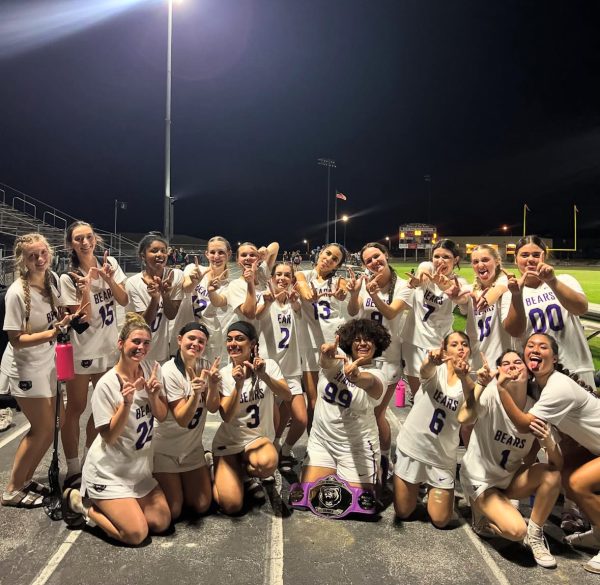What It Takes to Be a Student-Athlete
High School is already demanding with balancing the neurosis of a teenage mind along with one’s studies. However, even with these hardships, student-athletes are the ones quietly making strides in the classroom all the while concluding big wins for their team and school. It is also important to note that these athletes are aware of the sacrifices at stake and continue to be fully committed to their success on and off the field.
Many of these student-athletes get their start well before their high school career begins. For Julia Mauter, she joined her local swim team at the age of six and never stopped. Her passion for swimming took her to the state championship this year, earning the title of 5th place in the 100 Y Free.
A sophomore at Winter Springs High School, Mauter takes AP Music Theory and AP Computer Science Principles along with various honors classes. When asked what motivates her to continue to strive for excellence during school, Mauter replied with “I just know that if I don’t do my school [work], I won’t be able to do the things I actually want to do.” With this mindset, Julia is ranked at 23rd in the state within her class.
Both the Salutatorian and Valedictorian this year are top-ranked athletes. Matthew Chang, a starter for the WSHS Varsity Baseball team and this year’s WSHS Salutatorian, has committed to continue his baseball and academic career at Johns Hopkins University in the fall.
As a senior wrestler for the WSHS team, Hayden McCandless has obtained a 4.68 GPA making him Valedictorian for the class of 2019. Along with earning the highest GPA in his class, this past week, McCandless was awarded the title of “Student of the Year” for his achievements throughout his time at WSHS.
These athletes have shown that they are equally committed to both their studies as well as their respected sport(s). Here at WSHS, athletes have to maintain above a 2.0 GPA to meet eligibility requirements. High school can be an environment that is filled with unforeseen events and is a place where essentially, anything can happen. Going from practices to taking AP exams, and back to the field the next night, student-athletes learn quickly how to manage their time.
Student-athletes learn quickly to run on all four cylinders. Meaning, one has be a master at time management. From prom to meeting that lifelong friend, anything is possible. That’s why being a student-athlete makes it a bit more challenging. From everyday practices, game days, and the endless amounts of homework, these athletes are put to the test. It’s all or nothing. To make matters more stressful, your parents want the best from you, followed by your teachers, your coaches and then your teammates. That’s why it is vital that every student-athlete in high school knows how to balance their time wisely between homework, sports, and their social life. Each is equally important and should be held to the same standard.
Trey Seiler, who plays for the WSHS Boy’s Lacrosse team defines a student-athlete as someone who “works two jobs at once and who is dedicated enough to excel at both.” Many of these coveted athletes are balancing jobs outside of their life on the field. Seiler found it difficult to balance and attend practice every day but after four years of challenging himself, he found that everything “fell into place.” As someone who takes five AP classes, works two jobs, and is a star player on the lacrosse team, Seiler embodies the imperative work ethic that defines a student-athlete.
For students just starting off, Hope Matschner, who plays for the WSHS Girl’s Varsity Volleyball team suggests to “make sure to take time to care for yourself first. It becomes a lot sometimes, not just workload but mentally [speaking as well] and if you need to take a day off, take it!”
A 2016 study conducted by Northeastern University concluded 95% of male and 85% of female collegiate athletes report higher stress compared to 52% of non-athlete students. Individuals reported higher stress in “romantic relationships, higher responsibilities, decreased sleep, and extracurricular activity demand.” This stress correlated to the physical demands that athletes are put under during practices, games, etc. The study recommended that “intervention is necessary to reduce negative health outcomes in athletes and a supportive service or health resource as part of their athletic training regimen.”
An important factor in balancing academics and sports is maintaining a good athlete-coach relationship. Matchner mentioned that “coaches and teachers understand and work with [students] as long as [they] tell them in advance.”
In conclusion, student-athletes work extremely hard to meet the standards set upon them. Often their goals are to get to the collegiate level and this is what keeps them striving for excellence. Student-athletes are challenged to balance academics, community service, and sportsmanship throughout the year. They are held to the highest of standards, set by their school, coaches, family and friends, as well as themselves.
The 2013-2014 Student-Athlete Advisory Committee has compiled a list of tips to ensure success in the classroom, at home, and on the field:





